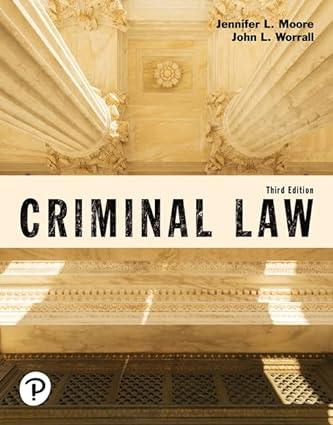At the federal level, one who incites, encourages, participates in, and/or carries out a riot may be
Question:
• At the federal level, one who incites, encourages, participates in, and/or carries out a riot may be guilty of an offense—provided that there is an interstate or foreign commerce dimension to the activities. States have similar statutes that prohibit rioting within their jurisdictions.
• The classic example of unlawful assembly is a protest.
When a protest turns violent, then rioting often occurs.
• Some of the common offenses that threaten public order are resisting arrest, disorderly conduct, breach of peace, vagrancy, loitering, and panhandling.
• It is a crime to resist a lawful arrest. Today, it is usually a crime to resist both lawful and unlawful arrest.
• Disorderly conduct is roughly equivalent to an individual version of riot or unlawful assembly.
• Breach of peace occurs in a number of ways depending on a given state’s law. Examples include causing an inconvenience, creating a risk of harm to others, and even fighting.
• Vagrancy refers, generally, to moving about with no visible means of financial support. Loitering is the act of lingering aimlessly or “hanging out” with no apparent purpose. Finally, panhandling is the same as begging.
Questions:-
1. Explain how group criminality differs from complicity and vicarious liability.
2. Explain the relationship between unlawful assembly, rout, and riot.
3. Compare and contrast at least three offenses against public order.
Step by Step Answer:






